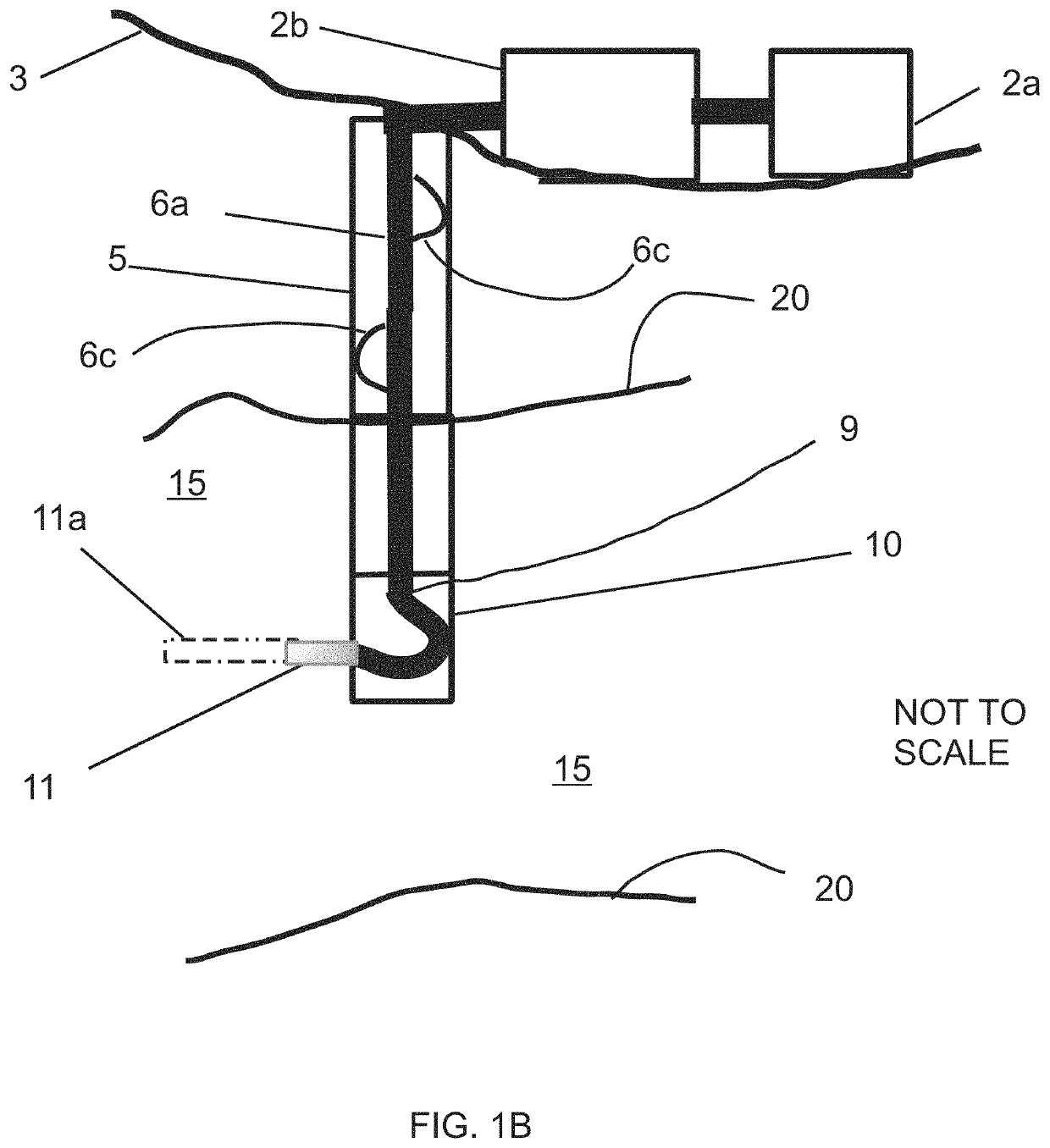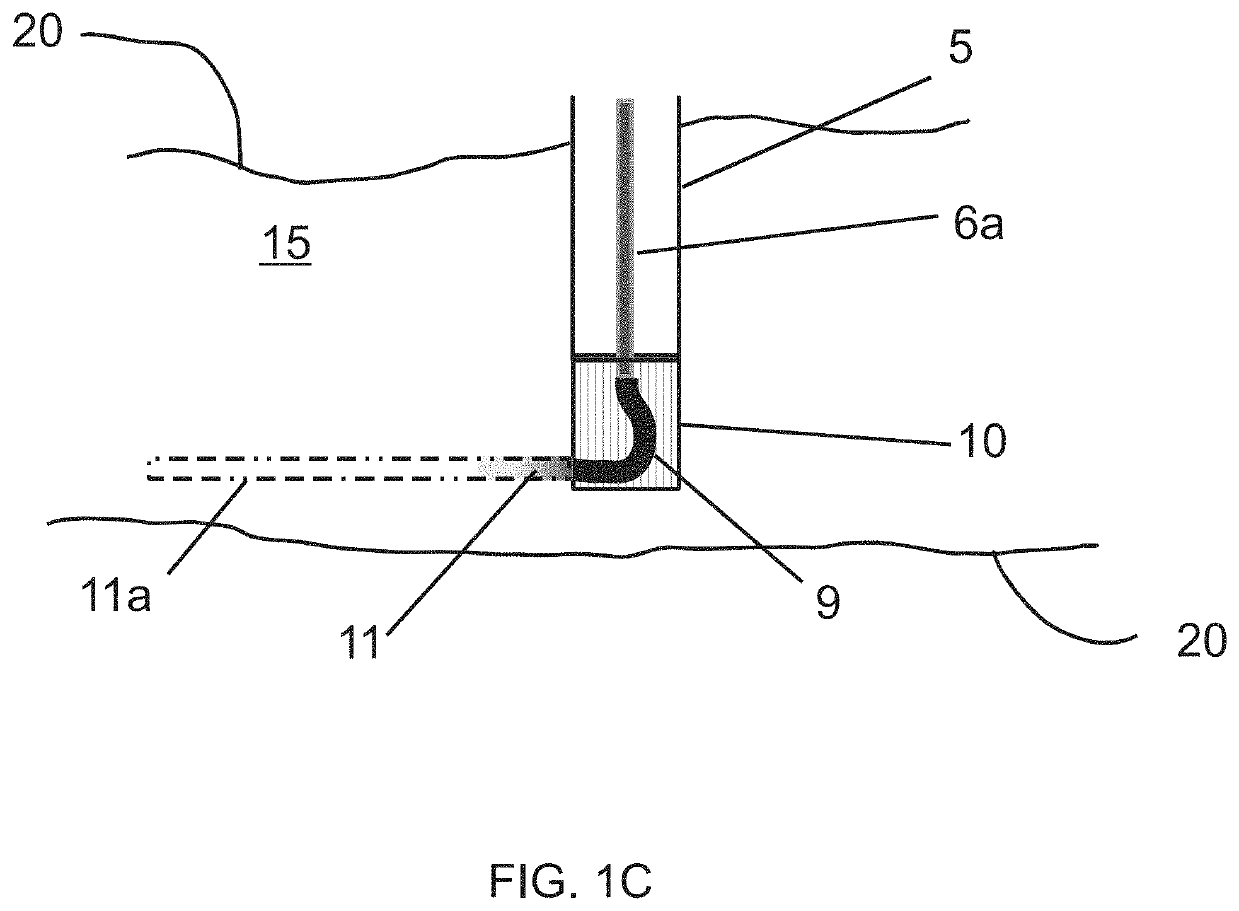Deep human-made cavern construction
a human-made cavern and deep-seated technology, applied in the field of deep-seated human-made caverns, can solve the problems of difficult, dangerous, and expensive to try to store radioactive and/or nuclear materials in underground caverns, near-surface caves built out of native rock or in somewhat deep natural salt deposits, and human-made caverns in salt deposits have not been routinely implemented to store large quantities of dangerous waste materials. , safer, more efficient, and/or cos
- Summary
- Abstract
- Description
- Claims
- Application Information
AI Technical Summary
Benefits of technology
Problems solved by technology
Method used
Image
Examples
Embodiment Construction
[0123]As noted above, embodiments of the present invention may describe means, systems, mechanisms, and / or methods for the implementation and construction of large diameter human-made subterranean caverns within deep geological formations, wherein such human-made caverns are configured for long-term storage and / or disposal of predetermined materials. The predetermined materials may or may not be waste.
[0124]In this patent application, the terms “radioactive material,”“radioactive waste,”“nuclear material,”“nuclear waste,” and / or “high-level nuclear waste” (HLW) may be used interchangeably herein.
[0125]In this patent application, the terms “cavern,”“cavity,” and / or “chamber,” may be used interchangeably with the same meaning. Further, “cavern,”“cavity,” and / or “chamber,” may mean an at least substantially hollow void space that may be human-made. However, “launch chamber” and “human-made cavern” may refer to different types of human-made structures that may be constructed in differen...
PUM
 Login to View More
Login to View More Abstract
Description
Claims
Application Information
 Login to View More
Login to View More - R&D Engineer
- R&D Manager
- IP Professional
- Industry Leading Data Capabilities
- Powerful AI technology
- Patent DNA Extraction
Browse by: Latest US Patents, China's latest patents, Technical Efficacy Thesaurus, Application Domain, Technology Topic, Popular Technical Reports.
© 2024 PatSnap. All rights reserved.Legal|Privacy policy|Modern Slavery Act Transparency Statement|Sitemap|About US| Contact US: help@patsnap.com










